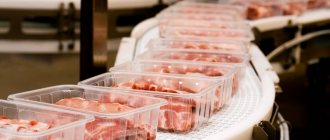Greenhouse business: what to grow
Earnings from a greenhouse will be high if the entrepreneur can correctly determine the crop with which he will work in the future.
According to modern analysts, growing flowers can be called the most profitable today. Second place goes to greens, and third place goes to vegetables. However, the initial capital for opening a flower business is five times higher than the amount of investment required to organize the cultivation of vegetables. One of the widespread and fashionable trends today is the cultivation of greens, for example, lettuce, onions, parsley and so on. This is explained by the fact that greens are considered a non-capricious crop; they do not require a large amount of light or heat to grow. In addition, greenhouses can be opened in almost any region of Russia, which significantly reduces the costs associated with transporting the harvested crop. In the vast majority of cases, a greenhouse with greenery serves one, perhaps two, nearby settlements. On average, growing greens will be 3-4 times more profitable than a vegetable greenhouse.
However, before making the final choice, you need to pay attention to the specific features of the region where you plan to open a business. An entrepreneur should conduct a thorough marketing research of the local market, identify product categories that are in great demand, and find out about the presence of competition.
To choose the right crop for further cultivation, you also need to know the place and method of harvesting the finished crop. For example, among resellers who work on wholesale schemes, “light” products – tomatoes – are in demand. If a businessman plans to trade in retail, he better pay attention to green crops, radishes, strawberries, and so on. An entrepreneur who can negotiate the supply of his products to local restaurants or cafes may consider more expensive, complex plants that require labor-intensive care for his greenhouse. For example, endive salad.
The remoteness of sales points also has an impact. If an entrepreneur works with distant markets, he will have to grow exclusively “light” products.
Idea implementation plan
The seedling business needs to be formalized. To do this, you need to register with the Federal Tax Service inspection at your place of residence as an individual entrepreneur (IP). The application shall indicate the following OKVED codes:
- main – 01.30 Growing seedlings
- additional – 47.76.1 – Retail trade of flowers and other plants, seeds and fertilizers in specialized stores.
Related article:
What you need to grow quality seedlings
Simultaneously with registration, you must notify the tax service about the transition to the unified agricultural tax. According to the Law “On Personal Subsidiary Farming”, you can get an exemption from tax payments if you manage it on your own, without hiring workers.
After registration, you should begin implementing your business idea according to the following plan:
- Build and equip a greenhouse, prepare the soil. It is advisable to carry out such work in the fall, since in cold weather it will be much more difficult.
- Buy seeds and fertilizers. You can start purchasing immediately before starting work.
- Search for potential buyers and agree with them on the terms of further cooperation. It is necessary to search for distribution channels throughout the entire period of business organization and further activities, since the success of the enterprise largely depends on this.
- When the time is right, you need to plant the seeds, wait for the shoots to appear and provide them with proper care.
- The finished planting material is packaged and/or packaged and sent for sale.
If the volumes are large, you can hire workers, but most often the seedling business is organized as a family business. After all, wages for hired workers make up the bulk of monthly expenses, so their availability largely determines how much you can earn from seedlings in one season.
What should be the specialization of the greenhouse business?
Beginning businessmen must understand that starting to grow several crops at the same time is considered impractical and unprofitable.
An entrepreneur will receive high profits only if he grows one crop on closed soil. The specialization should be narrow, which is confirmed by the enormous experience of the Dutch, who today are recognized leaders in the sale of products grown in greenhouses. In their opinion, specializing a greenhouse for two crops at the same time is an unacceptable excess.
That is, a business greenhouse at home should be created on the basis of analytical calculations and common sense. An entrepreneur who is just entering this field of business should not engage in amateur activities. First, a consumer market study must be conducted to determine the greenhouse crop that is most in demand.
Winter greenhouse as a business: legal details of registration
The easiest way for beginning vegetable growers is to register as an individual entrepreneur. This makes it possible to sell products not only on the market, but also to offer them to various retail outlets. It is recommended to choose a simplified form of taxation.
If you plan to build several greenhouses, you can register a farm. This form allows access to loans and subsidies, but requires more complex documentation.
What documents will be required to register an individual entrepreneur and how to prepare them correctly, you can read here.
Winter greenhouse as a business: how to sell products?
Competition in the greenhouse segment
There is no point in learning about how to start a greenhouse business if you are not competitive. It is necessary to determine the specifics of greenhouse farms that operate in this region. Pay special attention to the type, quantity and quality of the products they offer.
To be competitive, it is necessary to determine how full the sales market is and what the demand is among the population. Even if you have found one or more wholesale buyers, you need to take into account the fact that after some time they may go bankrupt, and you will have nowhere to sell your products. Therefore, it is best to have backup options for selling products.
How to analyze your competitors' business
The activities of entrepreneurs are considered according to the following criteria:
- name of the products grown;
- volume of goods offered for sale;
- degree of customer satisfaction with the quality of vegetables;
- what products are in demand?
A trade pavilion is a clear example of analyzing demand and assortment.
After the analysis, you can draw a conclusion about how profitable your greenhouse business will be. After all, given the competition, no one guarantees that cooperation with large wholesale customers will last for a long time, and that the vegetables chosen for cultivation will be in demand.
How to face competition
After analyzing the competitive landscape, it's time to start developing your advantages. These could be the following measures:
- reduction in product prices;
- quality assurance;
- release of a catalog indicating favorable conditions and assortment;
- compiling a list of potential clients and then sending them your commercial offers;
- loyal discount system.
Competition is a continuous process, so it wouldn’t hurt to hire a specialist. His responsibilities will be to search for clients, analyze the activities of competitors, and promote advertising events.
Hiring a marketer is a guarantee of your success
Features of consumer search
The establishment of distribution channels begins from the moment the greenhouses are erected or long before that. This way you can avoid downtime and guarantee stable profits throughout the year. Vegetables have a short shelf life, so it is recommended to find 2-3 options at a time.
Wholesale bases
The less ripe vegetables are stored in greenhouse warehouses, the greater their chances of being sold. Otherwise, the price falls, and you have to worry about delivering the products to the sales points. Delivering goods to a wholesale base is the most profitable way to achieve 100% sales of vegetables.
Wholesale base
Resellers
Their priority is to have their own transport. You do not have to waste time and money on delivery of goods. The only negative is that some of them significantly reduce the price. Therefore, it is better to deal with several resellers so that you have a choice.
Processing plants
Regular emphasis on the production of canned products requires a continuous supply of new raw materials. The benefit of cooperation with processing enterprises is that they can be supplied in large quantities at reasonable prices.
Retail Stores
This option is more difficult, but it is worth the effort to establish contacts with the owners and their representatives. Here you will have to take their recommendations into account. Delivery is carried out at the expense of the farmer.
Retail outlet
Cafes and restaurants
This requires the ability to build trusting relationships with people. But your advantage is that you can supply exotic products to restaurant establishments, the cost of which is higher than traditional crops.
Exotic vegetables for supply to a restaurant
Business plan outline
- The entrepreneur assesses the situation in the chosen area. This stage involves familiarizing yourself with the products grown by local competitors, comparing the quality and quantity of crops from other suppliers.
- At the second stage, the businessman must decide what form his activity will take - whether it will be year-round or seasonal. It’s easier and cheaper to organize a seasonal business, for which farm greenhouses are suitable. If the greenhouse business is year-round, industrial-type greenhouses equipped with special communications for lighting and heating will be required.
- Next, the entrepreneur is looking for wholesale buyers and other points of sale.
- The business plan must necessarily calculate all possible expenses and approximate profits.
- If the start-up capital is not enough, the businessman needs to think about sources of financing.
Drawing up project documents requires a detailed calculation of all the necessary communications that are needed for optimal operation of a greenhouse of a specific area. At the stage of drawing up a business plan, an entrepreneur must know exactly the price of equipment, construction and installation.
Today, many entrepreneurs use hydroponics for growing, which is suitable for cucumbers, herbs and other vegetables. Its main advantage can be considered the speed of cultivation. The vegetative cycle in this case will not exceed three weeks, so two to three tons of crops can be harvested every day from one hectare of land. Under natural conditions, the selected crop will ripen much longer. However, the taste quality decreases during hydroponics cultivation.
How should I register an IP?
It is necessary to register the activities of a farm as an individual entrepreneur if the goods will be sold with the involvement of employees and on a large scale:
- in small shops;
- hypermarkets;
- restaurants;
- cafe.
Assigning the status of an individual entrepreneur makes it possible to have certain benefits for running a greenhouse business.
To get them, you will need to register (which is not that difficult even for a beginner).
You will need to collect and submit the following documents to the tax office:
- registration application in form P21001;
- a photocopy of the passport of the founder of the farm;
- a receipt confirming payment of the state duty;
- photocopy of the document on assignment of TIN (if available).
After five days, you can pick up documents confirming the registration of an individual enterprise.
How to register a peasant farm?
The process of registering peasant farms contains the same stages of registration as the registration of individual entrepreneurial activity.
To register a peasant farm, you will need to collect a package of papers and take it to the tax service:
- application for registration of a farm, which must be certified by notary services;
- photocopy of passport;
- a receipt confirming payment of the state duty;
- list of selected codes according to OKVED-2;
- photocopies of documents confirming family ties of other people with the founder (this data may be needed to search for a person if he decides to hide from the law).
Detailed and up-to-date information on the registration of peasant farms is available on the website of the state tax service: https://www.nalog.ru/rn77/related_activities/registration_ip_yl/registration_fh/order/.
If a greenhouse farm is founded not by one, but by several members, then a contract is drawn up between the partners.
It states the following points:
- contact phone numbers;
- the founders must choose one person to head the greenhouse enterprise, the business plan of which is developed by all members;
- the rights and responsibilities of all founders must be clearly defined;
- the procedure for admitting and exiting members of the greenhouse business into the society;
- Photocopies of all passports are also attached.
To clarify the list of documents, you must consult a notary or lawyer.
Unlike registering an individual entrepreneur, this procedure is quite complicated, so it is better not to take risks, but to trust the specialists.
Greenhouses are not subject to licensing. The only “but”: if you decide to sell the goods to wholesale buyers, you will need to undergo mandatory sanitary control.
Also, if you are installing greenhouse heating for your household, the condition of the systems must be checked by a fire safety inspection.
Only after completing the appropriate documentation can you begin to implement the business plan.
Organizational plan
Business registration methods, documents
To simplify the maintenance of accounting documents and reporting, it is better to register the activity as an individual entrepreneur. For this purpose, the following documents must be submitted to the tax office:
- receipt of payment of state duty (costs 800 rubles);
- copy of passport;
- copy of TIN;
- application for state registration in form P21001.
You also need to fill out a special form to switch to a simplified taxation system in order to pay 6% on income. In some regions, a minimum tax rate has been approved for certain types of activities, so it is better to immediately inquire about the availability of benefits for agricultural activities.
Purchasing a greenhouse
Before organizing a greenhouse farming, it is necessary to select a suitable plot of land. The topography of the area is of great importance. The slope should be no more than 5 degrees. The absence of hills and the possibility of flooding is also desirable. The presence of a forest belt in the neighborhood will reliably protect from the winds.
The constructed greenhouse must have communications such as electricity and water supply. It is necessary to take care of access roads and the possibility of loading and unloading finished products.
Equipment
To grow cultivated plants year-round, it is necessary to provide certain climatic conditions: temperature, ventilation, lighting.
Heating systems can run on gas, solid fuel or electricity. Gas heaters in the form of air heaters and IR burners are the most expensive to maintain. Solid fuel boilers are quite inexpensive, and they can also ensure independence from communications. Thermal cables are a type of electrical device for heating the soil and are in great demand among farmers.
To extend daylight hours in winter, you will need to illuminate the greenhouse for 3–6 hours. Fluorescent lamps do an excellent job of this function, consuming a minimal amount of electricity and having a long service life.
Automated watering systems provide plants with the right amount of moisture. Water is supplied from a well, borehole, water supply or other sources.
Staff
To provide the enterprise with the required number of personnel, you can employ family members or find outside specialists by posting vacancy announcements on the Internet. At the beginning of work you will need 2-3 people. Ideally, the staff should include a technologist with a biological education. But if it is not possible to employ such a specialist in a startup, it is advisable to find a biologist for consultation. Growing cultivated plants in volume has many nuances, and without the right specialists it will be difficult.
You will also need a driver, preferably with his own vehicle, to provide the enterprise with the necessary raw materials and materials, as well as to deliver finished products to customers.
To open a greenhouse business, you need to hire personnel according to the following staffing schedule:
| Job title | Salary, rub. | Number of staff units | Total |
| Production Technologist | 40000 | 0,5 | 20000 |
| Worker | 18000 | 2 | 36000 |
| Driver | 30000 | 1 | 30000 |
| Total salary payment: | 86000 |
Tax system
This business relates to the production of agricultural products, therefore a taxation system for agricultural producers, the so-called single agricultural tax, is applied. (ESKHN). The main condition of this tax is that the revenue from the sale of these products is at least 70% of the total revenue, and also that the enterprise must be engaged in the production of agricultural products, and not in their sale. The Unified Agricultural Tax is calculated as follows: StxB, where St is the tax rate, B is the tax base. The tax rate is 6%, and the tax base is calculated from income received in the reporting period, minus expenses.
Sales of seedlings
Independent marketing of seedlings can be done in different ways:
- sell on the market;
- offer to neighbors in the country;
- transport by car.
Related article:
What is picking seedlings and is it necessary to do it?
Advertisements for the sale of seedlings can be posted on the territory of holiday villages, near public transport stops, and in other places where the target audience gathers.
But it’s best to find wholesale buyers, the main ones of which are:
- farms specializing in vegetable growing or floriculture;
- wholesale companies selling gardening and vegetable products;
- shops selling seeds and other planting materials.
It is necessary to conclude preliminary agreements with potential clients at the stage of business organization. A business card website helps a lot in expanding your customer base. A large number of buyers are attracted by posts about the sale of seedlings with photos, which can be published on social networks or on city forums.
How much money is needed to organize a greenhouse farming
According to preliminary calculations for the opening of a greenhouse with an area of 2020 sq. meters will require an investment of about 14 million rubles:
- Preparatory work, arrangement of the site - 700,000 rubles.
- Purchase, delivery and installation of greenhouse structures - RUB 5,000,000.
- Greenhouse equipment (irrigation system, heating, ventilation, etc.) - RUB 3,500,000.
- Purchase of other equipment and inventory (packaging machine, racks, buckets, boxes, etc.) - RUB 500,000.
- Costs for connecting utility networks (gas, water, electricity) - RUB 250,000.
- Construction of an administrative building and utility buildings. block - 1,500,000 rub.
- Purchase of planting material - 400,000 rubles.
- Purchase of a truck (for product sales) - RUB 700,000.
- Business registration, approvals and permits - RUB 150,000.
- Other expenses - RUB 300,000.
- Reserve fund - 1,000,000 rubles.
The financial component of a greenhouse business
It is worth understanding how much you need to invest and how quickly it will pay off before starting any work. Keep in mind that the ratio of income to expenses greatly depends on the area occupied by the greenhouse. As an example, let's consider the 300 m2 option.
Initially, the question arises about the need to rent or purchase territory for a greenhouse. The cheapest option is to look for a place outside the city, because it is cheaper there, and you need to take into account delivery costs. It is important to find the “golden mean” in terms of distance from the city. Then there are expenses for building materials and construction. Initial purchase of soil and seedlings. This includes costs for legal issues. On average, this comes out to 500,000 rubles.
When the building is ready, you can hire employees who will guard the premises and care for the vegetables. The salary fund varies depending on the qualifications of the workers. For a building of 300 m2, 3 people are enough, about 70 thousand rubles per month. Associated expenses require about 40,000 rubles. And income starts from 400,000 rubles. per month. Depending on the season, the figure may increase or decrease.
Greenhouse farms in Russia
In recent years, investors have found the greenhouse vegetable growing sector attractive and profitable. Despite possible problems in the industry, the number of investments is increasing every year. The main reasons for the attractiveness of this segment:
- huge state market;
- rising food prices every year;
- increased growth of consumption, i.e. demand.
With the support of consumers who prefer to consume domestic products, greenhouse farmers are displacing imported products. Healthy and inexpensive crops are gradually entering the world market.
Typical problems
Today, opportunities for successful and profitable production have emerged , but problems are also common. List of the most serious obstacles:
- increase in prices for services (gas, energy);
- low cost of products;
- crisis in the breeding and seed industries;
- complex transport network;
- lack of the required amount of vegetable storage;
- shortage of professional workers.
Entrepreneurs often sell their products at a disadvantage because they are afraid that they will spoil. Although they understand that in winter the price will rise. To preserve vegetables and make a winter greenhouse profitable, the construction and reconstruction of special wholesale storage facilities and the modernization of greenhouse equipment are required. All this will improve the situation in the industry.
Modern technologies force specialists to retrain in order not to make mistakes that could lead to losses. For a positive result, entrepreneurs are trying to oust the imported manufacturer from the Russian market. For this purpose, greenhouse vegetables all year round.
Investments: pros and cons
To date, the greenhouse industry has made a strong leap forward. This is due to the following reasons:
- resolving the market situation;
- strengthening import substitution;
- increase in food prices.
Prices are rising for all food products, but especially for vegetables and fruits.
As the standard of living of the country's population rises, the demand for vegetables also grows. Therefore, investments in greenhouse farming are promising. Buyers-wholesalers create special complexes for storing products, and they also invest their funds in the development and renewal of production. State-owned banks contribute to the development of projects that are a priority for the state. Greenhouse financing often occurs without a deposit. All this will lead to a significant increase in greenhouse crops.
Benefits and costs
Is a greenhouse business built using purchased prefabricated greenhouses profitable? Only with a well-drafted business plan and strict adherence to modern technologies. Investments in a greenhouse complex with a useful area of 1 hectare will be about $30–35 thousand. Of current costs, about 90% will be spent on gas and electricity.
The annual salary of a manager, an agronomist and 10 workers will be approximately $55–60 thousand. With proper efficiency of greenhouse farming, the profitability of the business is 15%. Such greenhouse technologies provide a return on investment in 3–4 years.
Advantages and disadvantages of greenhouse farming
Before planning a business, it is advisable to weigh the pros and cons of growing vegetables for sale. This will help to draw a conclusion about its profitability.
Table 1. Pros and cons of the greenhouse business.
ProsCons
| Possibility to collect 2-3 crops | Tough competition |
| Quick income and payback | Sales depend on seasonality |
| Continuous demand | Short shelf life |
| Wholesale and retail trade | To grow vegetables all year round you will need additional equipment |
| Easy organization | To sell products to stores you will need a special permit |
| There is an option to start a business from home | Low prices for vegetables in the summer |
If you focus on vegetarians and adherents of a healthy diet, demand for products is guaranteed at any time of the year. During the winter period, the interest in vegetables among this audience remains unchanged, and their prices increase significantly.
Marketing plan
The supply of high-quality fresh vegetables in our country is much lower than the demand for them. In Russia, only 25% of the total volume of vegetable consumption is produced under greenhouse conditions, and in the winter months even less - only 15%. The same vegetables that are imported from abroad cannot maintain their freshness without additives, due to which the vegetable becomes hard and can be stored for a long time. This primarily applies to tomatoes, which as a result are delivered to our store shelves almost tasteless. This suggests that sales of products grown in greenhouses in our country will be 100% found. Local produce will have at least four advantages: freshness, taste (no additives), price (lower transport costs) and speed of delivery. The planned production volume should be about 200 kg of vegetables per square meter per year. This is the average yield shown by greenhouse farms in Russia, without the use of artificial lighting. Main crops: cucumbers, tomatoes and lettuce. It is planned to sell vegetables to public catering outlets, food markets, local grocery chains and processing industries.
Choosing crops
Experts are unanimous: it is most profitable to grow flowers in a greenhouse. In second place are greens, in third are vegetables. Those who decide to bet on berry crops, primarily strawberries, have good chances.
The choice of a particular crop for cultivation depends on many factors:
- Level of competition in the region. Before you get started, you need to find out what other entrepreneurs are growing. It is worth considering that in summer and early autumn the profitability of the greenhouse business decreases due to an increase in the supply of soil crops.
- Consumer preferences. Bet on what is in high demand. Beginning farmers should grow the most popular crops that are easier to sell.
- Level of initial investment. The cheapest option is to build a small greenhouse for greenery. Growing flowers is much more expensive; they are demanding in terms of heating, lighting, and the size of greenhouses.
- Climate. The colder the region, the less profitable greenhouse farming is due to high heating costs.
How to choose a place for greenhouses
Where you should start a greenhouse business is by choosing a plot of land and the location of greenhouses on it. The topography of the area plays an important role. The optimal slope of the territory is up to 5 degrees. It is not recommended to choose areas in flooded and hilly areas. The optimal location would be the proximity of the land to a forest belt (to protect the plantings from the wind).
A prerequisite is the connection to the territory of a centralized water supply and electrical network. The water used for irrigation is tested in the laboratory for the presence of heavy metals and mineral salts.
Convenient access roads must be laid to the greenhouse in order to bring the necessary materials and export finished products with minimal costs. If retail sales are planned, organize free parking on the site.
Characteristics of popular crops
What is profitable to grow in a greenhouse all year round? Flowers, tomatoes, cucumbers and other vegetables, herbs or strawberries are most often grown in a greenhouse. Let's look at this in more detail.
- Flowers. The most popular option for farmers is hybrid roses. They are in stable demand and are not too demanding on living conditions. High-quality planting material, timely watering and fertilizers are required. You can cut up to 250 flowers from one rose bush per year. Chrysanthemums, various potted crops, hanging arrangements of annuals and flower seedlings are successfully grown in greenhouses.
- Greenery. It is possible to grow green onions, parsley, dill, lettuce, cilantro, and a variety of aromatic herbs. The most cost-effective option is to grow greens in peat pots, in which they are sold. Such greens are stored longer, the markup on them is higher, and consumer demand is stable at any time of the year.
- Tomatoes and cucumbers. Profitability is average, very dependent on the season. It is more profitable to grow vegetables using hydroponic technology in containers with a nutrient solution. The method shortens the growing season, but worsens the taste and the tomatoes turn out watery. Ground vegetables are much tastier, but keeping them in a greenhouse is more expensive. Tomatoes and cucumbers are demanding on soil composition and watering.
- Other vegetables. Heat-loving crops are often grown in greenhouses: eggplants, zucchini, sweet and hot peppers. To shorten the growing season, it is recommended to plant seedlings in a greenhouse. Vegetables require frequent replacement of soil and fertilizers and are well stored and transported.
- Strawberry. In demand throughout the year. It is more profitable to grow berries using the hanging Dutch technology, which saves space in the greenhouse. Strawberries do not tolerate transportation well.
IMPORTANT! You need to choose varieties cultivated for indoor soil, characterized by a rich taste and the correct shape of the berries, as well as their density and moderate juiciness.
Growing vegetables
Weather conditions, price forecasts and the size of investments make the business of growing vegetables on closed ground profitable. The fruits are unpretentious to weather conditions, the seedlings are affordable, which allows you to reduce the cost of initial purchases. The most popular in vegetable growing are tomatoes and cucumbers.
Greenhouse business: flowers
A greenhouse business for growing flowers has a profitability of 300% (with an investment amount of 300 thousand rubles). The most commonly grown plants indoors are irises, carnations, rose bushes, and peonies. However, experts do not recommend cultivating several varieties at once. The optimal number of species is 8–10. There is an explanation for this: each type of flowering plant requires special growing conditions. Air humidity, light level and temperature that are optimal for asters will not be suitable for daffodils and vice versa.
Growing mushrooms
Minimal lighting and high humidity levels are the main conditions for growing mushrooms.
The optimal conditions for growing mushrooms are minimal lighting and high humidity. To maintain the latter, the substrate is sprayed with water. Tanks with water at a distance of 1.5 meters from each other are also effective. Oyster mushrooms and champignons are most often grown in greenhouses.
Growing strawberries in greenhouses
Of all the types of berries that are suitable for growing in greenhouses, strawberries are the most popular.
Of all the types of berries that are suitable for growing in greenhouses, strawberries are the most popular. Unlike raspberries, blackberries, blueberries and gooseberries, they are less demanding. Gardeners use several planting methods: in boxes, pots and beds. The optimal growing medium for strawberries is a mixture of peat and sand in equal proportions.
Construction of a greenhouse for business
When all the nuances of choosing and growing different crops have become clear, the question arises of how to build a greenhouse. In order for the greenhouse to function throughout the year, it is necessary to choose a capital type of construction. The frame is chosen either from wood or galvanized metal. A winter greenhouse is always built on a foundation. The thickness is determined by the climatic conditions of the area.
The cheapest and fastest construction option is polyethylene coating. At the same time, the film is not durable and does not transmit sunlight well. As a rule, its replacement is necessary every season. Due to this, the payback is significantly reduced. This type of construction can be chosen for crops that prefer a humid environment:
- Cucumbers;
- Tomatoes;
- Pepper;
In such greenhouses, greens, flowers and strawberries produce a poor harvest.
An expensive, but more reliable option is glass greenhouses. It should be borne in mind that ordinary glass is not suitable for a greenhouse. You need to purchase special industrial glass. It tolerates temperature changes and bad weather conditions well. In addition to cost, glass has another disadvantage: an increase in the amount of ultraviolet light. On summer days it will be necessary to provide shade to prevent overburning.
The most suitable choice would be an acrylic or polycarbonate greenhouse for year-round use as a business. Such materials have high strength, while it can be easily bent into the desired shapes and cut. Polycarbonate has an excellent light transmittance coefficient and performs well even in northern regions.
For large businesses, you can choose a single-slope structure. It will distribute the light evenly, and the snow will roll off the roof faster. Engineers recommend making the north side of wood or cinder block. The opaque surface will imitate a solar panel, which will save on heating costs. It is important that the greenhouse has good air ventilation, climate control and irrigation devices.
To avoid microclimate disturbances, it is necessary to equip a double door or vestibule. Due to this, there is no loss of heat. To increase heating savings, the best option is to use a combination of different types of fuel. use:
- Furnaces;
- Bonfires;
- Electric boilers;
- Infrared cables.
For industrial purposes, larger sizes are used, most often the area ranges from 500 to 1000 m2. To ensure the reliability of the structure, load-bearing columns are located in it. For beginning farmers, you can choose more modest sizes. To work with vegetables and flowers, you can stay on an area of up to 200 m2, and there is enough space for greenery in a greenhouse measuring 100 m2.
Greenhouse room
The description of the location and premises is of particular importance.
For example, if an entrepreneur plans to grow agricultural crops, it is important to assess the quality of the land in the chosen location.
Also in the additional information you need to indicate how close the reservoirs are and whether the water is of high quality.
What transport hubs or highways are nearby?
This is important to know because greenhouse products are often very difficult to transport (they have a short sales period).
So an entrepreneur should look for sales locations as close as possible to the greenhouses and have convenient means of transportation to increase profits.
Equipment for business in a greenhouse
In terms of the greenhouse, the entrepreneur must pay special attention to the description of the technological processes of organizing the work.
First of all, identify which greenhouse model will be used and why.
Technical aspects are described in as much detail as possible.
They note who will do the installation work and how much it will cost.
It would be a good idea to note why this particular company was chosen and give examples of their successful work.
This is important when, with the help of a plan, an entrepreneur is trying to attract investors or obtain credit funds.
Name Cost (rub.) Total: 280,000 rub.
| Greenhouses made of certified material | 150 000 |
| Irrigation system | 15 000 |
| Additional lighting system | 15 000 |
| Heating system | 80 000 |
| Ventilation system | 20 000 |
How to open a greenhouse business: creating a business plan
First of all, you will need to determine the location of the land plot itself, its area. After which you will need to make a decision about what vegetables (greens, flowers) you will grow, and how much area will be allocated for each type. Then you need to specify the growing method you will use.
After this, approximately calculate how much harvest you plan to receive per square meter per year (for each type of product separately). With this short plan, you can determine what you already have and what you need to buy or do.
Methods of growing products in greenhouses
Hydroponics
The least expensive and most common method is hydroponics.
The process of plant growth in this way is automated, so vegetables, berries and fruits grow much faster than in natural conditions.
The crop, which will subsequently be sold, grows in a container. Water, saturated with various mineral compounds and fertilizers, flows there with the help of special tubes.
But such a quick method contains a rather significant disadvantage in the sales market - it is the watery and unnatural taste of the product.
The buyer will immediately distinguish a bunch of greenery grown in a garden bed from a bunch that was sprouted using the hydroponic method.
However, numbers are an inexorable thing. Statistics say that 92% of the greens on the shelves are grown in this way.
Intermediate option
There is also an intermediate method that is between growing crops hydroponically and in the ground.
It consists in adding peat and natural soil to nutrient solutions.
The advantage of this method is that the plants will not have a watery, but already familiar “earthy” taste. The downside is the additional costs of providing growing conditions.
Using this method, the entrepreneur receives a significant competitive advantage - a more “lively” taste, which is appreciated not only by retail customers.
This criterion is important for selling products to cafes and restaurants.
Mobile beds
A greenhouse business, the business plan of which was developed on the basis of growing on mobile beds, makes it possible to obtain products of the highest quality with maximum proximity to the natural taste.
An aspiring entrepreneur must choose a crop and growing method, and then draw up the financial section of a greenhouse business plan. The estimated estimate below will serve as an example.
You will learn about the advantages and prospects of the greenhouse business from the issue of the Agronomics program:
Purchased greenhouses
Let's consider a typical business plan for a greenhouse business, built on an industrial basis. It is standard, so it is widely in demand. A plot of land with an area of 1 hectare for greenhouses can be purchased for approximately 100 thousand rubles.
Engineering soil preparation is being carried out. Individual entrepreneurs purchase standard sections of industrial greenhouses. The coating is often polycarbonate, less often glass.
A section of such a prefabricated structure has the following parameters: width - 6 m, length - 4 m, height - 3.3 m. It costs 110 thousand rubles. How to roughly estimate the cost of significantly longer greenhouses? It is generally accepted that with an increase in length, every 2 linear meters will cost 30 thousand rubles. Sections are installed in rows, in the direction from east to west.
Greenhouse staff
A greenhouse business plan should include detailed information about personnel.
The entrepreneur lists in the document the names of positions, the number of employees, and their job responsibilities.
Financial information must also be indicated: salary for the year, possible bonus payments and planned rate increases.
Subsequently, the plan is supplemented with an established work schedule and even a vacation schedule.
Position Quantity Salary (rub.) Total: 130,000 rub.
| Manager | 1 | 40 000 |
| Technologist | 1 | 30 000 |
| Workers | 3 | 20 000 |
How much can you earn from growing vegetables indoors (greenhouse)
Profit from the sale of vegetables depends on the sales season. Traditionally, the maximum price for vegetables is observed in the spring and winter. At this time, tomatoes and cucumbers can be sold at prices ranging from 80 to 120 rubles per kilogram.
From a greenhouse with an area of 1000 sq. m. monthly you can get approximately 16,000 kg of fresh vegetables. If we take even the minimum price of 60 rubles/kg, then, provided that all products are sold 100%, the monthly revenue of the farm will be 1.2 million rubles. Net income in this case will be: 960,000 - 450,000 (fixed expenses) = 510,000 rubles. Naturally, we will be able to receive such income only within 5-6 months. The rest of the time (summer - autumn) prices for vegetables are 2 - 3 times lower. Nevertheless, the project pays off, with proper organization, in just 8 - 12 months.
Market and industry analysis
potential of consumers of greenhouse services
Changing prices for finished products at different times during the year, as well as fierce competition, will require a thorough analysis of the local market.
First, you need to study the range of products grown, the pricing policy and the volume of production of all farms in the region. Moreover, greenhouse enterprises that operate both during the warm period and year-round require attention.
This will help you predict your own sales and set optimal prices for products.
Payback period for a greenhouse business
Although farming is not a particularly booming industry these days, it can be a highly profitable business.
If you maintain profitability at the level of 15-20%, the investment will pay off in 1-3 years.
The payback period depends on the size of capital investment, the scale of the business, as well as the selected type of product.
For example, for a flower business, an entrepreneur will need to invest 3-4 times more money than in growing vegetable products.
At the same time, growing vegetables turns out to be 3-4 times less profitable than growing greens!
The final choice of products remains, of course, with the entrepreneur.











